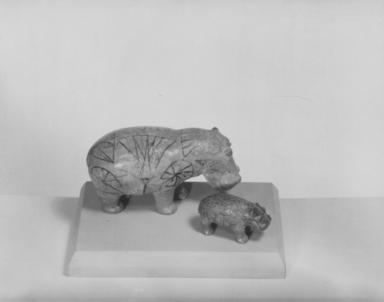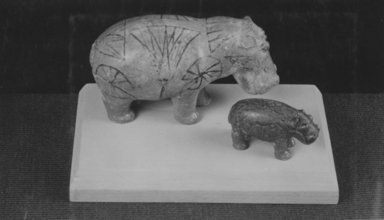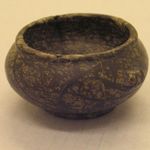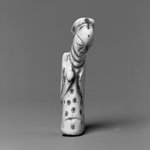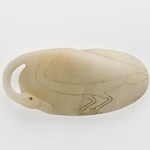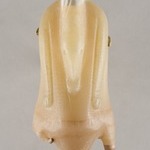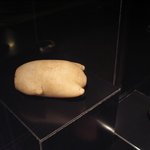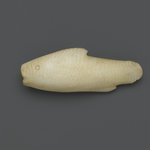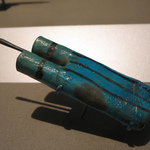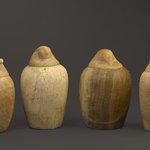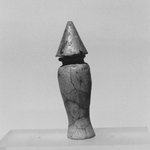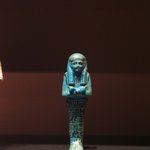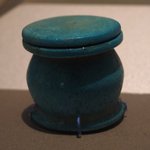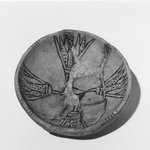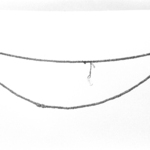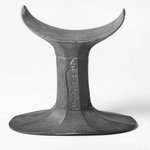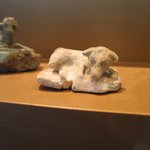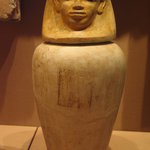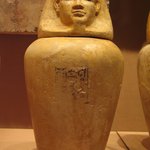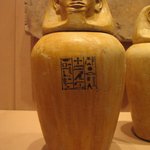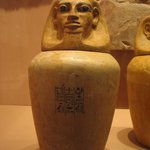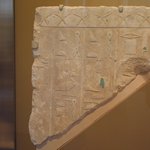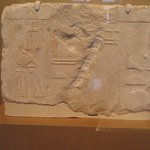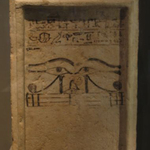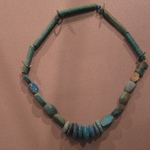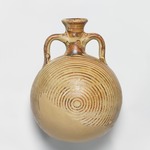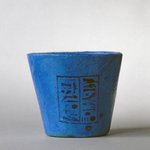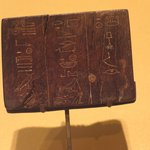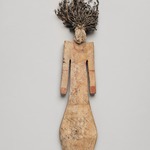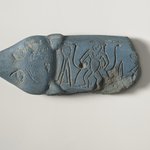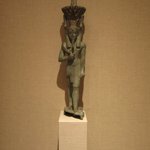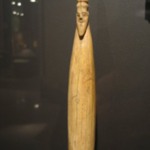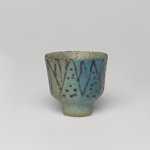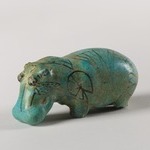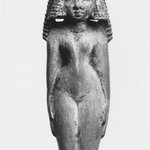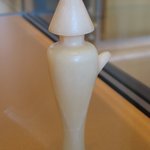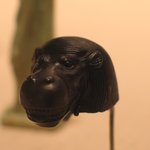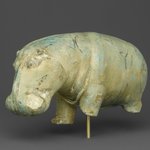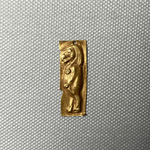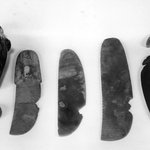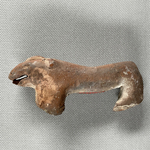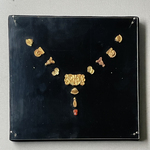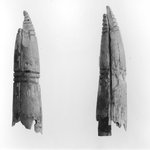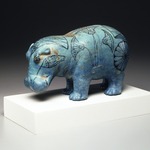

Hippo, ca. 1938–1539 B.C.E. Faience, 7/8 × 1 × 2 1/16 in. (2.2 × 2.5 × 5.2 cm). Brooklyn Museum, Charles Edwin Wilbour Fund, 36.120. Creative Commons-BY (Photo: Brooklyn Museum, CUR.36.120_erg2.jpg)

Hippo, ca. 1938–1539 B.C.E. Faience, 7/8 × 1 × 2 1/16 in. (2.2 × 2.5 × 5.2 cm). Brooklyn Museum, Charles Edwin Wilbour Fund, 36.120. Creative Commons-BY (Photo: , CUR.35.1276_36.120_NegID_L335_9_print_bw.jpg)
Hippo
Egyptian, Classical, Ancient Near Eastern Art
On View: Old Kingdom to 18th Dynasty, Egyptian Galleries, 3rd Floor
The ancient Egyptians often snapped off the legs of hippopotamus statuettes before placing them in tombs, as these two examples show. The broken stumps of the smaller statuette’s legs demonstrate how bright blue glaze adhered to the white faience. The larger figure’s snout, perhaps also broken in antiquity, has been restored.
MEDIUM
Faience
DATES
ca. 1938–1539 B.C.E.
DYNASTY
Dynasty 12 to Dynasty 17
PERIOD
Middle Kingdom to Second Intermediate Period
DIMENSIONS
7/8 × 1 × 2 1/16 in. (2.2 × 2.5 × 5.2 cm) (show scale)
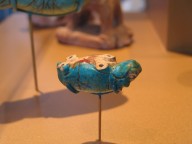


COLLECTIONS
Egyptian, Classical, Ancient Near Eastern Art
ACCESSION NUMBER
36.120
CREDIT LINE
Charles Edwin Wilbour Fund
PROVENANCE
Archaeological provenance not yet documented; before 1909, probably acquired by Mrs. Garrett R. Pier; 1909, probably sold at American Art Galleries, New York, NY, "The Mrs. Garrett R. Pier sale," lot 641; by 1936, acquired by Garrett Chatfield Pier; March 6, 1936, purchased at Anderson Galleries, New York, NY "Garrett C. Pier Collection," lot 68, by the Brooklyn Museum.
Provenance FAQ
CATALOGUE DESCRIPTION
Undecorated dark blue figure of a standing hippopotamus. Eyes, ears and nostrils in high relief. Mouth indicated by incision.
Condition: Poor. All four legs missing. Head broken off and neck reattached to body. Snout chipped. Glaze worn in spots. Numerous firing cracks.
EXHIBITIONS
MUSEUM LOCATION
This item is on view in Old Kingdom to 18th Dynasty, Egyptian Galleries, 3rd Floor
CAPTION
Hippo, ca. 1938–1539 B.C.E. Faience, 7/8 × 1 × 2 1/16 in. (2.2 × 2.5 × 5.2 cm). Brooklyn Museum, Charles Edwin Wilbour Fund, 36.120. Creative Commons-BY (Photo: Brooklyn Museum, CUR.36.120_erg2.jpg)
IMAGE
overall, CUR.36.120_erg2.jpg. Brooklyn Museum photograph, 11/26/2007
"CUR" at the beginning of an image file name means that the image was created by a curatorial staff member. These study images may be digital point-and-shoot photographs, when we don\'t yet have high-quality studio photography, or they may be scans of older negatives, slides, or photographic prints, providing historical documentation of the object.
RIGHTS STATEMENT
Creative Commons-BY
You may download and use Brooklyn Museum images of this three-dimensional work in accordance with a Creative Commons license. Fair use, as understood under the United States Copyright Act, may also apply.
Please include caption information from this page and credit the Brooklyn Museum. If you need a high resolution file, please fill out our online application form (charges apply).
For further information about copyright, we recommend resources at the United States Library of Congress, Cornell University, Copyright and Cultural Institutions: Guidelines for U.S. Libraries, Archives, and Museums, and Copyright Watch.
For more information about the Museum's rights project, including how rights types are assigned, please see our blog posts on copyright.
If you have any information regarding this work and rights to it, please contact copyright@brooklynmuseum.org.
RECORD COMPLETENESS
Not every record you will find here is complete. More information is available for some works than for others, and some entries have been updated more recently. Records are frequently reviewed and revised, and we welcome any additional information you might have.
